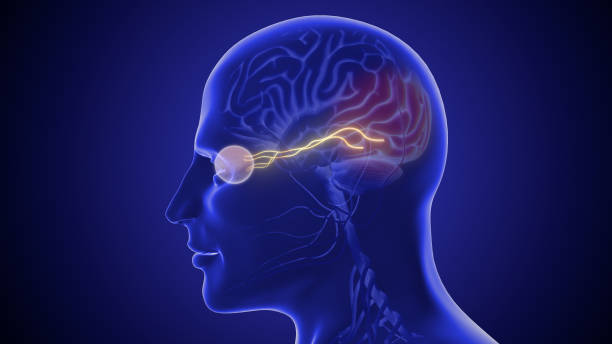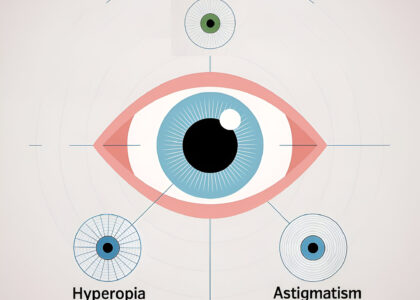Migraine and Vision:
Migraines are more than just intense headaches—they can also bring a host of other symptoms, including vision disturbances like visual auras. When these symptoms arise, they can be alarming and impact daily life. Fortunately, neuro ophthalmology offers targeted approaches to help manage these visual issues, providing relief and a better understanding of the connection between migraines and vision.
In this post, we will explore how migraines affect vision, what visual auras are, the role of Euro ophthalmologists in treatment, and how lifestyle changes can support better eye health. If you have been experiencing vision-related symptoms with your migraines, this information could be a step toward relief.
Understanding the Connection Between Migraines and Vision
Migraines can have a significant impact on vision. During a migraine episode, some people experience visual symptoms that can range from mild disturbances to dramatic changes. This is because migraines can affect areas of the brain responsible for processing visual information, leading to blurred vision, sensitivity to light, and sometimes even temporary vision loss.
Visual disturbances related to migraines are thought to be caused by changes in blood flow and electrical activity within the brain. When this occurs, it can interfere with how visual information is processed, creating symptoms that may feel frightening or disorienting.
Neuro ophthalmology is a specialized field focused on these types of interactions between neurological conditions and vision. By understanding the brain-eye connection, Euro ophthalmologists can offer targeted solutions for managing these symptoms, allowing patients to regain a sense of normalcy. If you are struggling with migraine-related vision issues, a Euro ophthalmologist may be able to help you find relief through a mix of diagnostic assessments and personalized treatment options.
What is a Visual Aura, and Why Does It Happen?
A visual aura is a common symptom that some people experience before a migraine attack. These auras typically involve temporary visual disturbances, such as flashes of light, zigzag lines, or even blind spots in one’s field of vision. While they are usually harmless and resolve on their own, they can be disconcerting, especially for those who experience them for the first time.
The exact cause of visual auras is not fully understood, but research suggests that they may be linked to a phenomenon called “cortical spreading depression.” This is a wave of electrical activity that moves across the visual cortex of the brain, temporarily affecting vision. The experience of a visual aura varies from person to person and can last anywhere from a few minutes to an hour.
Although visual auras do not necessarily signal a serious condition, frequent or severe auras may warrant further investigation. A Euro-ophthalmologist can assess these symptoms and help determine the most appropriate course of action, whether it is simply monitoring the condition or considering preventive treatments.
Role of Neuro ophthalmology in Managing Visual Symptoms
Neuro ophthalmology plays an essential role in managing vision issues related to migraines. Euro-ophthalmologists are trained to address neurological disorders that affect vision, making them uniquely qualified to handle complex cases where migraines cause visual disturbances. They have the tools and knowledge to differentiate migraine-related visual symptoms from other eye or brain conditions.
By conducting thorough eye exams and neurological assessments, Euro-ophthalmologists can identify the underlying factors contributing to vision issues. From there, they develop treatment plans tailored to each patient’s needs, often in coordination with other healthcare providers. Occasionally, treatment may involve medications to prevent migraines or alleviate symptoms. In others, lifestyle and environmental adjustments may be recommended to reduce migraine triggers and improve overall eye health.
If you experience frequent visual disturbances alongside migraines, consulting a Euro-ophthalmologist could be an effective step toward managing your symptoms and improving your quality of life.
Diagnostic Procedures Used in Neuroophthalmology
Euro-ophthalmologists utilize a variety of diagnostic tools to evaluate migraine-related vision issues. These include comprehensive eye exams, visual field tests, and imaging studies like MRI or CT scans. Visual field tests help assess peripheral vision and detect any blind spots, which can provide clues about the affected areas in the brain.
In cases of suspected migraines with an aura, imaging may be used to rule out other neurological conditions that could be causing similar symptoms. Additionally, optical coherence tomography (OCT) may be performed to get a closer look at the retina and optic nerve, ensuring there is no underlying eye disease.
These diagnostic steps are crucial in building an accurate picture of the patient’s condition, allowing Euro-ophthalmologists to recommend the best course of action based on the root causes of the symptoms.
Treatments Available for Migraine-Related Vision Issues
Treatment for migraine-related vision issues typically focuses on managing both the migraines and the specific visual symptoms. For many patients, medications that prevent or reduce the frequency of migraines, such as beta-blockers, antiepileptic drugs, or CGRP inhibitors, can also help mitigate visual symptoms.
In addition to preventive medications, acute treatments may be used to address visual symptoms when they appear. These can include triptans, which help reduce the intensity of a migraine attack, or anti-inflammatory drugs to relieve associated pain. Lifestyle adjustments, such as reducing screen time, managing light exposure, and maintaining regular sleep patterns, can also help lessen visual disturbances over time.
For patients who do not respond to medication alone, Euro-ophthalmologists may recommend non-invasive therapies or even vision therapy exercises to strengthen the visual system and reduce sensitivity to triggers.
When to See a Euro-Ophthalmologist for Migraine Symptoms
If you experience frequent or intense visual disturbances with your migraines, it may be time to consult a Euro-ophthalmologist. While some migraine-related vision issues are common and not necessarily dangerous, more severe or unusual symptoms—such as sudden vision loss or prolonged auras—should be investigated to rule out other neurological conditions.
Signs that indicate a need for specialist consultation include recurring blind spots, sensitivity to light, or difficulty focusing during a migraine. A Euro-ophthalmologist can help pinpoint the underlying cause and provide guidance on managing these symptoms more effectively.
Booking an appointment with a specialist can offer peace of mind and allow you to address these symptoms proactively, preventing them from affecting your quality of life.
Lifestyle Changes to Support Eye Health and Reduce Migraines
Managing migraines and supporting eye health often go hand in hand. Simple lifestyle changes can reduce the frequency and intensity of migraine episodes and their accompanying vision problems.
Prioritizing good sleep hygiene, limiting screen time, and reducing exposure to bright lights can help prevent migraine triggers. Additionally, maintaining a balanced diet, staying hydrated, and managing stress through relaxation techniques like yoga or meditation can further support eye and brain health.
Incorporating these changes into your daily routine may not eliminate migraines, but they can make it easier to manage symptoms and maintain better overall wellness. These habits, combined with guidance from a Euro-ophthalmologist, can help you take control of migraine-related vision issues.







